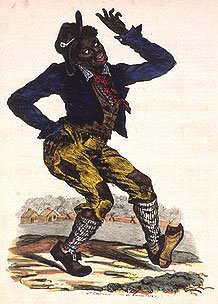Segment 77: Watt's in a name?
Last time, we did a segment on eponyms, words named for people, and there were so many we had to do another.
Bluetooth: The Scandinavian makers of the revolutionary wireless device named it for 10th century King Harald “Bluetooth” Gormsson, noted for a dead, discolored tooth.
Ferris wheel: Pittsburgh structural engineer George Washington Gale Ferris Jr., who inspected steel for the 1893 Chicago World’s Fair, brought up the idea for an enormous metal wheel to rival the Eiffel Tower.
Freudian slip: Sigmund Freud, the founder of psychoanalysis, described these speaking errors that reveal secret thoughts – usually sexual.
jacuzzi.com
Jacuzzi: The Jacuzzi family, early 20th century Italian immigrants, developed various forms of water pumps in California. In 1968, Roy Jacuzzi created the world’s first integrated whirlpool bath.
Paramount Studios
Mach 1: The sound barrier is named for Austrian physicist Ernst Mach, the first to systematically study supersonic motion, in the 1880s. He made important contributions to understanding the Doppler effect, and influenced a young Albert Einstein, who called Mach the philosophical forerunner of relativity theory.
Marxism: German philosopher Karl Marx co-wrote the Communist Manifesto in 1848 and authored Das Kapital in 1867. Both predicted the collapse of capitalism and championed pure socialism. His writings inspired many early 20th century communist regimes.
Molotov cocktail: When the Soviet Union invaded Finland in November 1939, Soviet foreign minister Vyacheslav Molotov claimed his forces were dropping not bombs but humanitarian food packages. That prompted Finns to sarcastically label bombs as “Molotov picnic baskets,” and later to use the term “Molotov cocktails” for their own improvised firebombs of glass bottles, gasoline and cloth wicks.
Murphy’s Law: “If something can go wrong, it will.” The most accepted origin story is that, during a test at what’s now Edwards Air Force base in California, some sensors were installed backward, prompting engineer Capt. Edward A. Murphy to utter a variation of the infamous phrase. Wordorigins.org says it found several versions, dating back to the Roman empire!
Jim Crow: Starting in 1828, performer Thomas Dartmouth "Daddy" Rice had a successful stage act in blackface, as an exaggerated, highly stereotypical character. Soon the phrase became a racial slur. By the end of the 1800s, it instead described laws and customs that oppressed African-Americans.
Lynching: During the American Revolution, Charles Lynch, a Virginia planter and justice of the peace, headed an irregular vigilante court formed to punish loyalists outside due process.
Ponzi scheme: In 1920, the Italian immigrant launched the scam now named for him, in which existing investors are paid with money collected from new investors. Ponzi went to prison.
Salmonella poisoning: In the late 1800s, veterinarian Daniel Elmer Salmon was first chief of the federal Bureau of Animal Industry and established its Division of Animal Pathology. A colleague who first identified the bacteria behind a disease named it for Salmon.
National Park Service
Teddy Bear: President Theodore Roosevelt came up empty during a 1902 hunting trip in Mississippi. An assistant cornered a black bear and tied it to a tree, and associates brought the president over. He refused to shoot it. A political cartoon satirizing the incident inspired a Brooklyn businessman to create a stuffed toy, “Teddy’s bear.”
Volt, Watt: In the late 1700s and early 1800s, Italian physicist Alessandro Volta made a number of discoveries in the early field of electricity, leading scientists to name for him the unit for electromagnetic force. Scottish engineer James Watt’s improvements to the steam engine were a significant factor in the Industrial Revolution, and in the late 1800s, pairing the Watt engine with Thomas Edison’s electrical generator allowed generation of electricity on a large scale.
Zamboni.com
Zamboni: In 1940, refrigeration businessman Frank Zamboni and relatives opened a giant ice skating rink in Southern California. At the time, resurfacing ice was done by hand and took several workers more than an hour. In 1949, Frank developed a machine that would shave the ice, remove shavings, and wash and squeegee the surface.
Watch this on video! https://youtu.be/XimRMXn3olw
Next time: More words that are names. Ye gods!
Readers: "Something Went Horribly Wrong" features samples of bad writing we see nearly every day. You can participate! Be our duly deputized “grammar police.” Your motto: “To protect and correct.” Send in your photos of store signs, street signs, menus, TV news graphics, newspaper headlines, tweets, and so on. It doesn’t have to be a grammatical error. It can be just what we call “cowardly writing.” Include your name and home town so we can credit you properly. You're free to add a comment, although we reserve the right to edit or omit. Now get out there! Send to Eliot@eliotkleinberg.com
Haven’t signed up for our newsletter yet? Do it now! And tell your friends!
NOTE: Eliot and Lou Ann are available for speaking engagements, and can travel. Reach us through the comments section. Just think of all of your employees getting back to work on a Monday, their heads filled with all the ways we’ve shown them to be better communicators!









